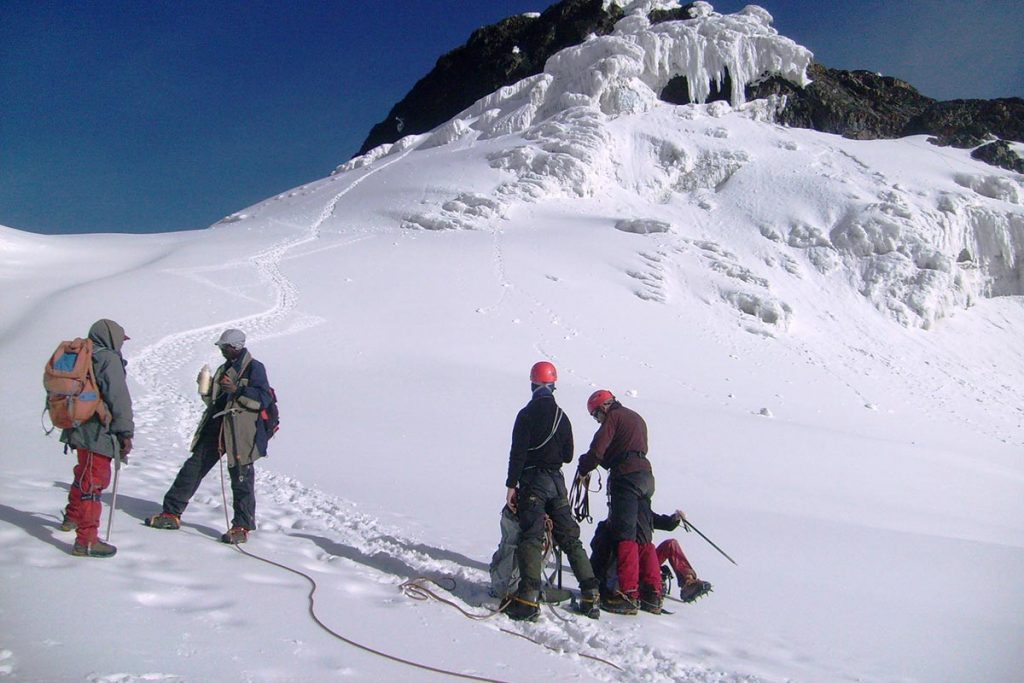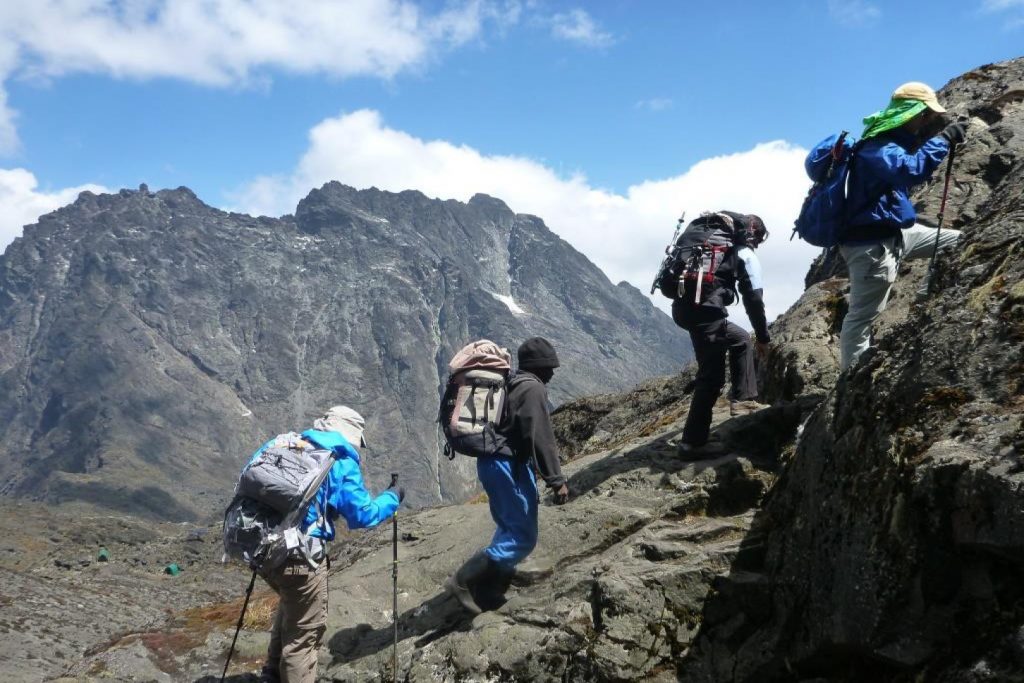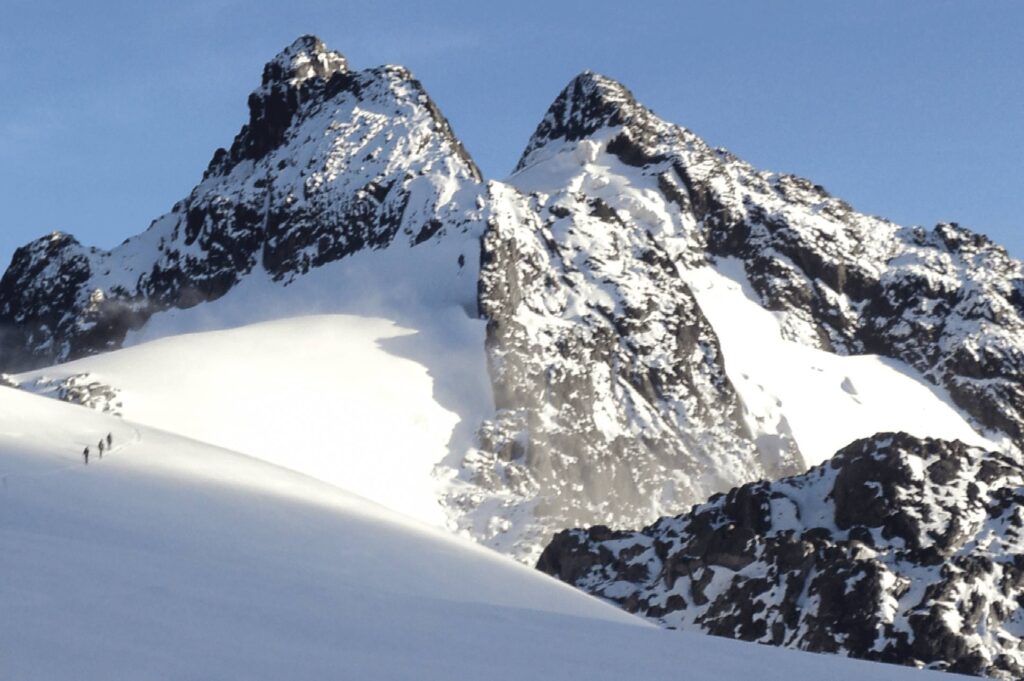A Guide To The Rwenzori Mountains
A Guide to the Rwenzori Mountains: Often referred to as the “Mountains of the Moon,” the Rwenzori Mountains are among of Africa’s most stunning and remarkable natural formations. Shared by Uganda and the Democratic Republic of the Congo, it is a shared UNESCO site including alpine vegetation, tropical rain forests, and Africa’s highest peak. The Rwenzori Mountains are a great destination for travelers, particularly for those who enjoy hiking and climbing because of the challenging paths and breathtaking vistas. This is a basic overview of what to expect from a hiking and climbing trip in the Rwenzori Mountains.

Among their many other remarkable natural characteristics are the sheer cliffs, valleys, and Lake Glacial of the Rwenzori Mountains. With a height of 5,109 meters, or 16,762 feet, Mount Stanley is the third-highest mountain in Africa and part of the range. It has several typical features, including heathers, gigantic lobelias, and the uncommon Rwenzori turaco bird. Owing to the varied environment, one can spend one day in a tropical rainforest and the next ascending to an alpine meadow.
Ideal Time to Go
During the dry seasons of December to February and June to August, it is best to go hiking and climbing in the Rwenzori Mountains. The weather during these months is generally consistent and pleasant, with less frequent rains and less mud on the trails and climbing routes. However, the Rwenzori weather is somewhat unpredictable, so one should always be prepared for anything.
In the Rwenzori Mountains, hiking
There are a variety of hiking itineraries available in the Rwenzori Mountains, ranging from short and easy treks to longer and more difficult treks that will take you to the lower elevations of the mountain range. These are a few of the most well-liked hiking trails:
Circuit Trail Central

The Central Circuit trek, which travels across every feature of the mountain ranges, is the most popular trek in the Rwenzori Mountains. It usually takes 7 to 9 days to complete, and along the way are numerous high passes, lakes, and breathtaking vistas of the Alps. The track is best suited for experienced hikers because to its clear markings and plenty of shelters.
What to anticipate:
– Diverse Landscapes: The walk passes through a variety of biomes, such as the alpine zones, heath, bamboo zone, and montane forests. Hikers will pass through areas home to plant species like groundsel and huge lobelia.
– Wildlife: The Rwenzori range is home to a wide variety of species, including hyraxes, blue monkeys, and numerous birds. Another delight for birdwatchers is the vivid Rwenzori turaco, which is also simple to detect.
Kilembe Trail
Another well-known trail that is a condensed version of the Central Circuit is the Kilembe Trail. The trek typically takes six to seven days, and along the way, views of snow-capped mountains and glaciers can be had. One of the most well-known trails begins in the village of Kilembe and travels to the western edge of the range.
What to anticipate:
– Difficult Terrain: Unlike the Raskor Hab Uwa track, the Kilembe track features steep steps and is consequently best suited for experienced hikers. But in the end, the scenery and the sense of adventure make it worthwhile.
– Glacial Views: The walk offers a stunning perspective of the Stanley and Speke glaciers, and the greatest part is that you can go up close to them.
Climbing in the Mountains of Rwanda
Professional climbers consider the Rwenzori Mountains to be among the most difficult yet rewarding climbs in all of Africa. The most well-known ascent is found atop Mount Stanley, which has numerous peaks, including the highest point in the range, Margherita Peak.

Margherita Peak Ascent
At 5,109 meters, Margherita Peak is a technically challenging climb that calls for ice climbing and high-altitude mountaineering expertise. With one day added for acclimatization, the climb typically takes 8 to 10 days to complete. The climbers must navigate glaciers, snow fields, and boulders.
What to anticipate:
– Technical Climbing: Crampons, ice axes, and ropes are needed for the technical ice climbing to Margherita Peak. It’s best to plan for some difficult sections, and in particular, ice in the higher elevations of the ascent.
– Magnificent Views: Rainy climbers can enjoy splendid views over the surrounding peaks, glaciers, and even the far-off Congo Basin from the summit of Margherita Peak.
Getting Ready for Your Journey
When trekking and climbing in the Rwenzori Mountains, there are a number of factors to take into account. The following are some crucial pointers to help you get ready for your adventure:The following are some crucial pointers to help you get ready for your adventure:
Guides and Permits: A permission is required for entry into the Rwenzori Mountains National Park, however anyone is welcome to visit. Using a guide and, in certain situations, porters to assist with lugging equipment and other essentials is also required. Due to their local knowledge, a few certified tour operators offer guided hikes and mountain climbs, which is quite beneficial.
Physical fitness is recommended for hikers because the Rwenzori Mountains provide some difficult treks and climbs. Gaining endurance and conditioning for the high altitude, severe climbs, and erratic weather are priorities.
Gear & Equipment: Wearing the proper clothing is essential for both the activity’s safety and enjoyment. A decent sleeping bag, warm clothing, a waterproof jacket, and a solid set of hiking boots are necessities for hiking. Other equipment is needed for climbing, such as ropes, ice axes, and crampons. Food, drink, and a first aid kit should also be brought with one.
Acclimatization: When trekking and climbing, one must take precautions to avoid altitude sickness, which can be a serious risk at high altitudes. Make sure you allow adequate time for acclimatization, particularly if you plan to climb Margherita Peak. Observe your body and refrain from overexerting yourself.
Environmental Responsibilities: The Rwenzori Mountains represent a delicate ecology that is difficult to manipulate. A few Leave No Trace guidelines to follow are to unpack all trash, stay on designated trails, and stay away from wildlife.
In summary
Any hiker or climber would be remiss in missing the incredible experience of hiking or climbing the Rwenzori Mountains. The “Mountains of the Moon” are a unique and thrilling location located in the center of Africa because of their variety of landforms, rich plant and animal life, and challenging terrain. You will explore the wonders of the highlands whether you choose to hike the Central Circuit Trail, ascend to Margherita Peak, or simply travel around the lower regions of the Rwenzori highlands. Prepare for one of the best trips in one of Africa’s most spectacular mountainous regions by packing sensibly, protecting the environment, and getting ready.
